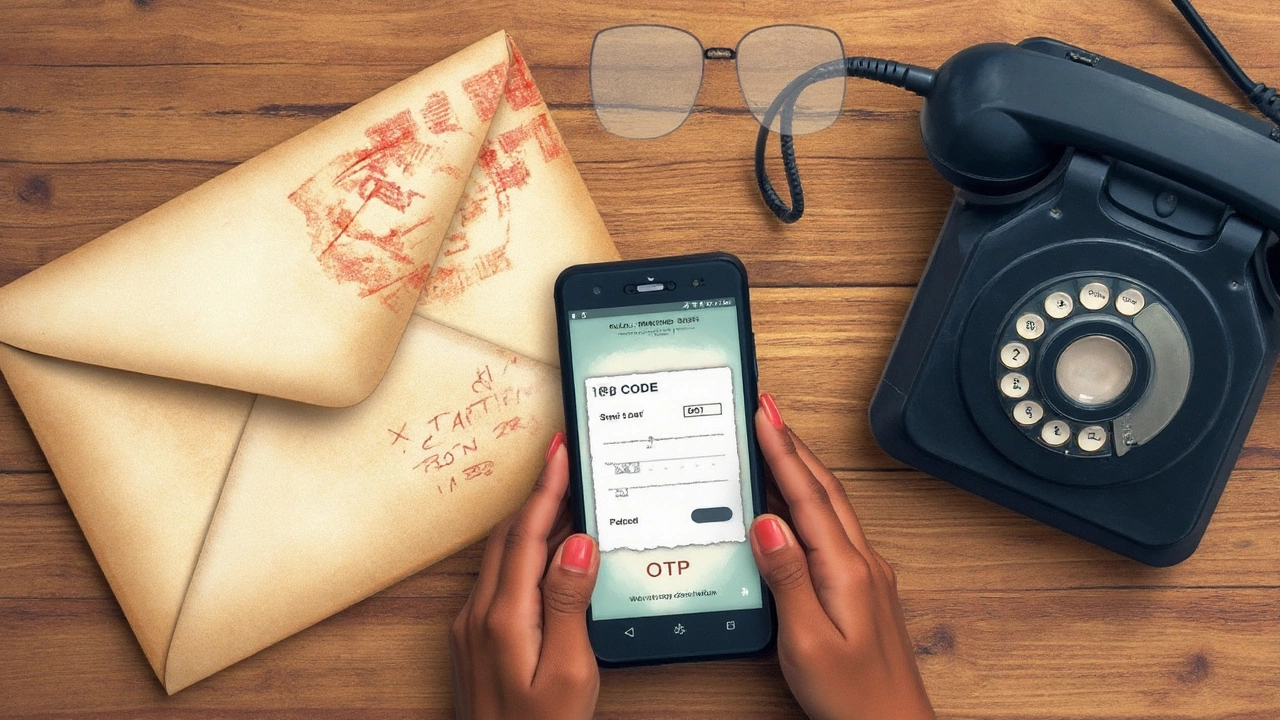What Are the Indian Codes? Exploring Every Everyday Code You Use in India
 Aug, 6 2025
Aug, 6 2025
Ever found yourself staring at a bill, a package, or a form and wondering what all those random numbers mean? Turns out, India is pretty much built on a backbone of codes. They're everywhere—like invisible threads quietly holding the jumble of our massive, diverse country together. But few folks ever stop to think about how much rides on those digits. If you’ve ever tried sending a letter, dialing a landline, or even traveling across states, you‘ve used Indian codes (and probably didn’t notice). Some are super familiar, like PIN codes, but others are only noticed when you hit a problem—like a failed money transfer or a chatty call that never goes through. So why do these codes matter, how did they come about, and which ones shape daily life in 2025?
Cracking the Everyday Codes: What Are Indian Codes, Anyway?
The term 'Indian codes' might sound suspiciously like a secret handshake. But don’t worry, nobody’s asking you to learn arcane rituals here. When we talk about 'codes' in India, we mean the random (but actually very carefully thought-out) series of numbers and letters that help everything run smoothly. Think of them like behind-the-scenes stage managers—you don’t see them, but if they weren’t working, the play would come to a screeching halt. The big three Indian codes most people run into are:
- PIN codes
- STD codes
- IFSC codes
But that’s not all—there are vehicle registration numbers, GSTINs, PAN numbers, and more. You might think of codes as only for tech or finance, but in India, even a handwritten postcard needs a code. Each serves its own purpose, for everything from mail delivery to taxes. Maybe you’ve never even realized how often you tap in these codes, until suddenly a clerk at the post office asks for your extended PIN, or your relative asks for your city’s STD code so they can call from their old-school landline. India tallies up thousands of official codes, all carefully planned to cover communities from the heart of Mumbai to the tiniest village in Lakshadweep. There’s a reason why the postman can tell if your letter belongs in Bihar or Bengaluru in seconds—it’s all in the digits.
PIN, STD, and IFSC: Three Codes You Can’t Escape
Start with the PIN codes. Every Indian address has a six-digit number, short for Postal Index Number. Introduced in 1972, PIN codes solved a headache: before, postmen had to puzzle over incomplete or identical street names. The first digit tells you the region, the next one the sub-region, and the third is the sorting district. The last three digits get your package to the right area within that district. For example, Mumbai’s PINs start with 400, while Delhi’s are 110. There are now over 19,000 PIN codes, and the list keeps growing as new towns pop up. If you’ve ever wondered why your Amazon order makes it to you on time, you can thank an engineer named Shriram Bhikaji Velankar—he invented PIN codes for India’s vast postal system!
STD codes, or Subscriber Trunk Dialing numbers, are those area codes you dial when calling landlines in another city. Type in 022 before a Mumbai number, or 044 for Chennai. There’s a weird nostalgia in hearing people say “what’s your STD code?”—especially since mobiles have taken over. But for businesses and rural areas, they’re still essential. The first digit of the code often hints at the region it covers, and the codes themselves avoid clashing with mobile prefixes. You might roll your eyes at landlines, but try dealing with government offices and you’ll notice they still matter a lot.
Then there’s the IFSC code—the hero (or villain) of every online fund transfer. IFSC stands for Indian Financial System Code, and banks assign a unique 11-character code to each branch. The first four characters tell you the bank, the fifth is always a zero, and the last six point to the branch. Mess this up on your payment, and the money just bounces right back. Not fun if you’re sending rent or splitting a bill! Everyday users probably only pay attention when they see a ‘failed transaction’ email, but businesses memorize these codes like mantras.

Other Indian Codes Hiding In Plain Sight
Think these are all the numbers you’ll use? Not even close. Dive a little deeper and you’ll bump into a maze of other codes that make life a bit easier—or, sometimes, more complicated. Vehicle registration numbers, those colorful plates on every scooter and car, follow a system assigned by the Road Transport Authority. Two letters for the state, another two or three for the district, followed by a series of numbers unique to the vehicle. Spot a car with “DL 1C” and you know it’s from Delhi’s RTO.
The PAN number is another one almost every working adult needs. The Permanent Account Number is a 10-digit alphanumeric code that acts like a personal tax ID—without it, you can’t open a bank account, buy property, or file taxes. Then there’s the GSTIN, or Goods and Services Tax Identification Number, a 15-character code for businesses to pay taxes. Flip over any bill in a shop, and you’ll see the GSTIN stamped in tiny letters. It’s not just for the taxman: anyone running a business in India sweats over keeping those codes accurate.
Some codes are more behind-the-scenes: Indian Railways runs on train numbers and station codes (like NDLS for New Delhi or MAS for Chennai Central), aviation relies on airport codes (BOM for Mumbai, DEL for Delhi), and even government schemes have their own unique codes. These systems reduce errors and speed up processes—can you imagine booking a ticket without a train number, or the chaos if every airport used a different code for the same city?
How Codes Shape Life and Solve Problems
All these codes can feel like a bureaucratic maze. But think about what India would look like without them. You’d need to spell out every postal direction by hand, explain bank transfers at length, and figure out if you were getting billed the right tax as a business owner. Every code is a shortcut that spares you dozens of headaches. PIN codes made rural delivery possible—before they came in, villages could go weeks without getting mail! IFSC codes are the bedrock of UPI and NEFT transfers, which are now lifelines for everyone from students to grandparents. And GSTIN? Thousands of small businesses in Kerala and Assam keep their shops legal, just by registering one code online.
Codes also keep us safe. When disasters strike, authorities can use postal and vehicle registration codes to coordinate relief quickly. Lost your mobile? Sim cards have unique IMSI numbers that help carriers track down stolen devices. Government agencies rely heavily on all this pinpointed information to roll out new schemes and benefits—even health programs use district codes to send vaccines where needed. If you’re moving homes or applying for a loan, chances are you’ll end up filling out forms where these codes are non-negotiable. Mess up the digits and a lot can go sideways—that means lost parcels, failed payments, or a scramble with KYC updates. Top tip: Double check any code you’re given before submitting—autofill is not always your best friend here.

Tips, Fun Facts, and Quirks of Indian Codes
Honestly, memorizing codes isn’t anyone’s idea of fun. But small tricks can help. If you know the first digit of a PIN code, you instantly narrow down the state. (3 for Tamil Nadu, 5 for Andhra and Karnataka, and 6 for Kerala and West Bengal, for example.) STD codes crop up all over business cards and websites, and Google makes it easy to fetch any new ones as cities expand. For bank transfers, save the IFSC codes for your most-used contacts—it spares you frantic WhatsApp messages at the worst possible time.
Some weird but true facts: India's smallest PIN code covers just the tiny island of Campbell Bay in the Andaman & Nicobar Islands. The longest STD code? Try 5 digits in some remote corners of the Northeast. Fun trivia: the only alphabet that doesn’t show up in PAN numbers is 'O', so it’s never confused with the number zero. Also, GSTINs are designed so that the very first two numbers match the state code on vehicle plates—meant to reduce confusion in logistics and transport. There's even a special system for tracking gold imports, with every consignment stamped with an import code.
Next time you fill in a form or book a train ticket, remember: each time you use one of these codes, you’re plugging into a system that quietly makes life work for over a billion people. And maybe, just for a second, you’ll actually appreciate those strings of digits—and the geeky folks who came up with them—just a tiny bit more.